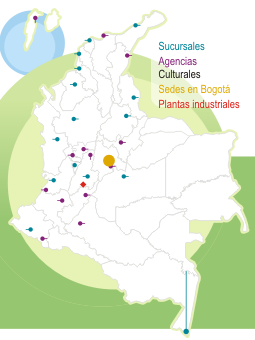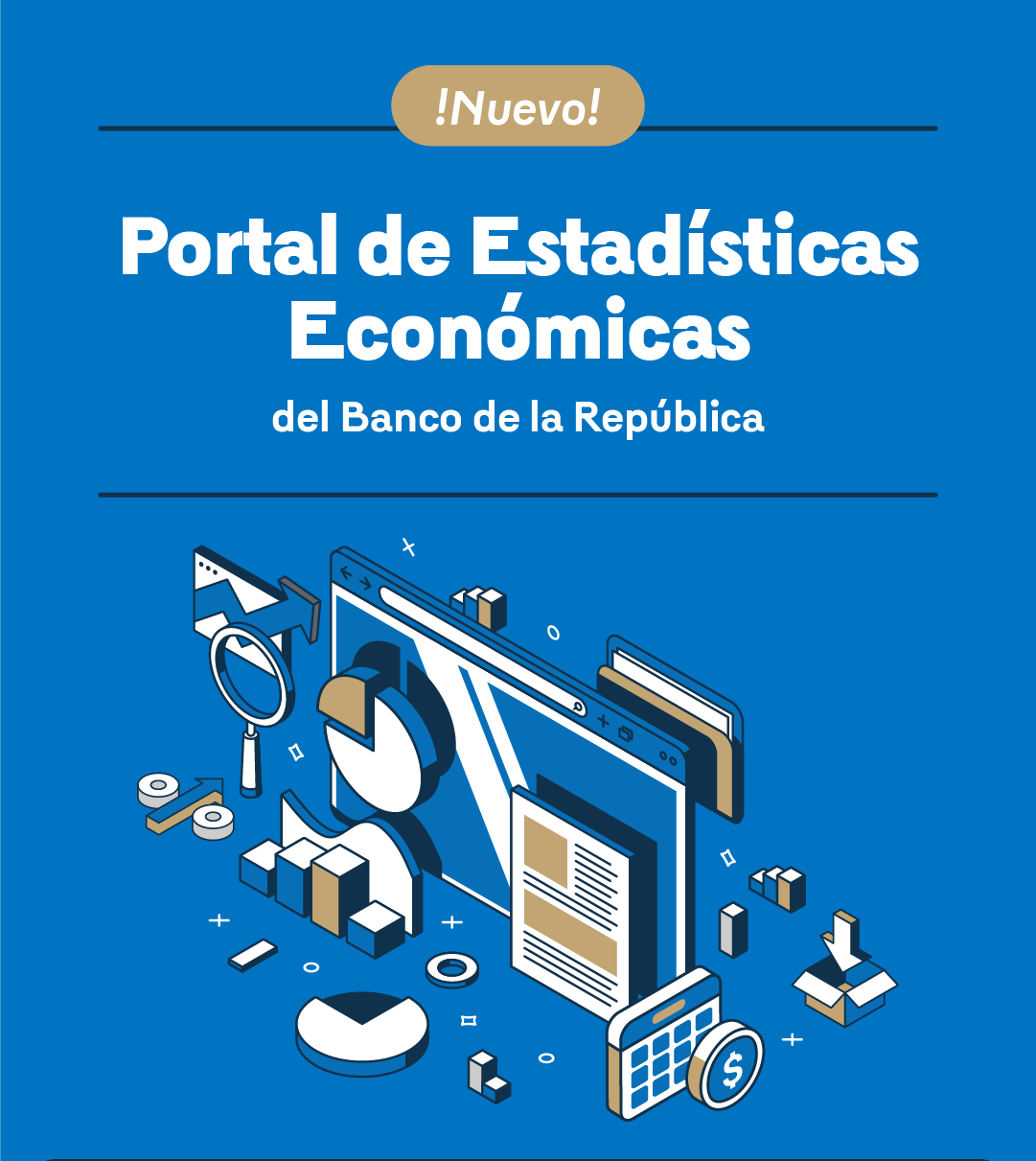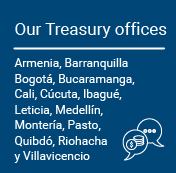See Recent Regional Economic Bulletins
 Bogotá
Bogotá
(Bogotá, D. C.; Cundinamarca)
In the first quarter of 2023, the Bogotá region (Bogotá and Cundinamarca) showed a downward trend in its annual growth according to most of the monitoring indicators, contrasting with the economic expansion observed a year earlier. The transportation sector was affected by the suspension of some airline operations, while the manufacturing industry, commerce, and buildings recorded a deterioration in the annual comparison base effect and moderate consumption due to high inflation and high financing costs; also, civil works continued to advance in the capital city. Foreign trade showed greater stability after two years of high growth. The unemployment rate remained at double-digit levels and inflation remained high, although it registered some downward corrections.
 Northeast
Northeast
(Arauca, Boyacá, Norte de Santander, Santander)
The Northeast economy continued to grow at an annual rate in the first quarter of 2023; however, the pace was slower than in previous quarters due to the moderation in domestic demand. Industry led the growth associated with higher production of refined petroleum products and other products of regional importance. Agricultural activity was favored by a better start of harvests, while livestock showed mixed results due to higher input costs and a slowdown in consumption. In the construction sector, the area under construction and in progress grew, while leading indicators such as approved square footage and new housing showed a marked decline. The unemployment rate decreased in Tunja, in contrast to Bucaramanga and Cúcuta, which recorded annual increases. Finally, inflation remained in double digits in the three capital cities of the Northeast.
 Eje Cafetero
Eje Cafetero
(Caldas, Quindío, Risaralda)
During the first quarter of the year, the economy of the Eje Cafetero slowed down and showed a mixed balance of activities. Available indicators showed a decline in agricultural production, while industry lost dynamism and even contracted in Caldas. Domestic sales grew less, and exports declined, especially coffee exports. The slowdown in demand may have contributed to moderating the expectations of companies, which was reflected in the fall in imports of capital goods and raw materials. Moreover, building construction grew, but to a lesser extent, while the low new housing sales increased, in line with the decrease in credit disbursements for their purchase. Finally, inflation remained high, and the labor market showed an increase in employment in the three main cities.
 Northwest
Northwest
(Antioquia, Chocó)
In the first quarter of 2023, the Northwestern region's economy slowed down further. The context of high inflation, higher interest rates, and uncertainty conditioned the results of the region's productive activities through lower demand. As a result, industrial production, retail sales, and most construction and agricultural sector indicators contracted. Likewise, transportation stagnated and hotel occupancy declined. Meanwhile, mining production grew and coincided with the increase in gold exports and boosted total external sales; however, imports fell while remittance receipts increased in Antioquia. Meanwhile, unemployment in Medellín and in the Valle de Aburrá fell. However, this was not the case for Quibdo, where it increased and was the highest in the country. Finally, inflation remained at high levels but moderated slightly in March.
 Southeast
Southeast
(Amazonas, Casanare, Guainía, Guaviare, Meta, Vaupés, Vichada)
In the first quarter of 2023, the Southeast region showed a combination of results in its economic activity, with annual progress in oil production and the agricultural sector favored by cattle slaughtering , the production of processed palm fruit, and the supply of agricultural products, together with an increase in credit disbursements to the agricultural sector. In the construction sector, the area approved for construction also increased, while there was a decline in new housing sales. Meanwhile, there were setbacks in trade, in perceptions of growth in sales, vehicle and motorcycle licenses , and in construction activity. Regarding foreign trade, exports decreased mainly due to a lower dynamism in Meta, while imports showed an increase. Finally, in Villavicencio, the unemployment rate increased and inflation increased, although it was below the national result.
 Caribbean Coast
Caribbean Coast
(Atlántico, Bolívar, Cesar, Córdoba, La Guajira, Magdalena, San Andrés y Providencia, Sucre)
In the first quarter of 2023, the Caribbean region's economy declined compared to the same period of the previous year. Among the activities that exhibited decline were: domestic trade, affected by the fall in household consumption; transportation due to the closure of some airlines; construction, with a decrease in the sale of new homes; and the agricultural sector, with a reduction in the dispatch of agricultural products from the region, also facing a decrease in loans granted to this sector. In contrast, there was an increase in industry driven by the food and beverage subsector and in exports. The unemployment rate in the region's capital cities fell while inflation continued to rise, exceeding the national average.
 Center
Center
(Caquetá, Huila y Tolima)
The economy of the Central region showed a slight annual increase during the first quarter of the year, according to preliminary results of available indicators. Domestic demand for goods favored the slight growth of the agricultural sector and industry, while the dynamism of spending on services was reflected in the good performance of transportation and tourism, despite the effects of the interruption of some airline operations at the end of the period. In contrast, construction fell, as did the sale of new housing and credit disbursements for their financing. External demand declined due to lower coffee exports, while imports decreased, especially of raw materials. Moreover, inflation remained high, while the labor market deteriorated as the unemployment rate increased due to job losses, especially in the informal sector.
 Southwest
Southwest
(Cauca, Nariño, Putumayo, Valle del Cauca)
The economy in the Southwest declined in the first quarter of 2023 compared to the same period of the previous year. Real trade sales , including those of new automobiles, declined due to prudent spending and higher financing costs. As a result, manufacturing production adjusted its supply downward. Agricultural activity and transportation, especially land transportation, also declined due to the extended winter. Likewise, Finagro’s development credit disbursements fell, and new housing sales declined in the construction sector. Nevertheless, the unemployment rate improved in the region's three capital cities, and inflation remained high, although it exhibited minor signs of deceleration.
















































